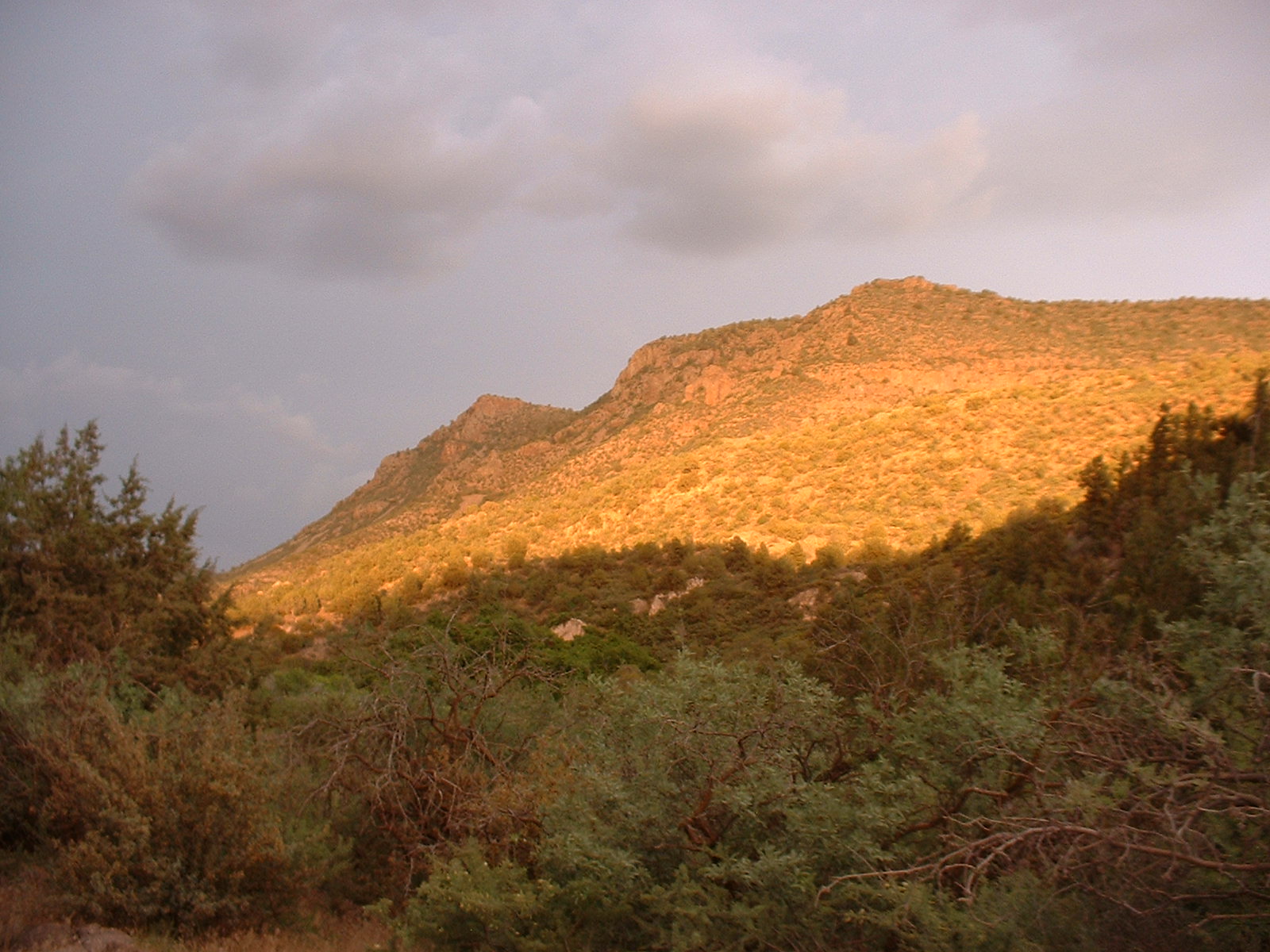 |
| OUT OF THE BLUE... |
|
 A
Season for Hope A
Season for Hope
Despite setbacks in a bleak Administration, wilderness protection is alive
and well in Arizona. AWC Director Don Hoffman shares some end-of-the-year wilderness wisdom. Read
more…
|
| IN DEPTH |
 Saving the Best for Last
Saving the Best for Last
Few places remain in Arizona that are free of roads, teem with wildlife, and overflow with opportunities for solitude. Except for one.
Read how the Tumacacori Highlands are Arizona's chance to protect its last, truly wild natural heritage in a creative partnership with locals, ranchers, hunters, and conservationists.
Wilderness 101: The Nuts and Bolts of Conservation
Wilderness...oh yeah. That the place where I'll get eaten by a bear, where I'm locked out of doing anything fun, and where that big geyser blows every 10 minutes, right? WRONG.
Confused about what's wilderness and what's not?
Read more…
Where the Deer and Pronghorn Roam by Kim Vicariu, The Wildlands Project
 Wildlands connect mammals, birds, and other critical species to their homes, feeding and mating grounds, and more diverse gene pools. But a web
of roads and development is splintering these vital sanctuaries.Read more…
Wildlands connect mammals, birds, and other critical species to their homes, feeding and mating grounds, and more diverse gene pools. But a web
of roads and development is splintering these vital sanctuaries.Read more…
|
| WILDERNESS
TO WATCH |
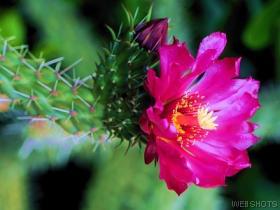
A
Haven for Wildlife...and Trash: The desert tranquility
that symbolizes The Cabeza Prieta National Wildlife Refuge contains
the largest refuge wilderness in the lower 48. But its close proximity
to the border has left it a dumping ground for illegal immigrant
and drug runner trash. Read
more…
|
| SPECIAL
FEATURE: The Wild Colorado River |
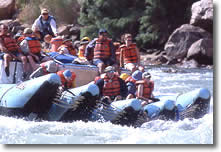
Wild Land or Disney Land?
With politicians manhandling the public process to satisfy private interests at the Grand Canyon, wilderness protection for the Colorado
River is running out of time. Is the canyon's wild river heart hurtling toward theme park status? Read more…
|
| BOOK OF THE SEASON |
|
The Return of the Mexican Gray Wolf 
For years, the Mexican gray wolf was hunted to the brink of extinction, until one woman took
on the challenge of restoring the animal to its natural habitat in Arizona's Blue Range.
In 1987, Bobbie Holaday formed the citizens'advocacy group "Preserve Arizona's Wolves" (PAWS)
and advocated nationally for protection of the wild lands in Arizona wolves call home.
Her book, The Return of the Mexican Gray Wolf, is a first-hand account of her crusade and is now available in bookstores. A wonderful gift for wolf enthusiasts!
|
| SUPPORT
THE ARIZONA WILDERNESS COALITION |
With
Your Help, We CAN Protect Our Wildlands for the Future.
The
Arizona Wilderness Coalition appreciates the generous financial
support that we receive from private foundations and individuals.
With your kind support, we are poised to do some significant and
exciting work on behalf of wilderness protection. However, fundraising
remains an immediate priority.
Private
foundations, large donors, and individuals may make tax-deductible
donations through our fiscal sponsor, The Wilderness Society. Please
make your checks payable to "The Wilderness Society"
and send them to:
Don
Hoffman, Executive Director, AWC
P.O. Box 529
Alpine, AZ 85920
**Please
make note on the memo line of your check "For Arizona Wilderness
Coalition."
If
you have any questions, you can also contact our Executive Director,
Don Hoffman, at: dhoffman@azwild.org.
Or telephone: (928) 339-4426.
THANK
YOU.
|
|
 |
TABLE OF CONTENTS
Current Issue Index
AZ Wild Web Site
SHORT TAKES
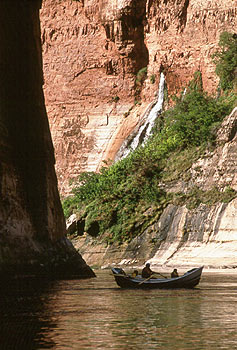
Wild Land or Disneyland?
WINTER
OF CONTENT
 In Arizona, winter is the time to take the kids or the dog and get outside! Trek an untrekked
trail! Explore with friends! Take a look at our upcoming list of inventory trips, meetings, workshops, and other wild and crazy outdoors activities. Check 'em out…
In Arizona, winter is the time to take the kids or the dog and get outside! Trek an untrekked
trail! Explore with friends! Take a look at our upcoming list of inventory trips, meetings, workshops, and other wild and crazy outdoors activities. Check 'em out…
DID
YOU KNOW...?
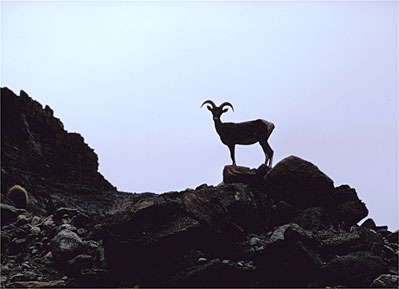
Arizona Game and Fish Department personnel captured and treated
22 desert bighorn sheep in the Ironwood Forest National Monument in mid-December
to protect the animals from a disease outbreak--pink eye--that can cause blindness
if not treated. Biologists say 13 of the captured bighorn sheep had the bacterial
infection. Sheep donít necessarily die directly from the disease, but they inhabit
areas with steep cliffs, where blind animals can easily die falling. Blind bighorns
are also easy prey for mountain lions.
Game and Fish Department wildlife experts say that, based on what they saw during
the capture operation, it appears the disease outbreak is concentrated around
the main portion of the Silver Bell Mountains, which are located in the Ironwood
Forest National Monument.
The bighorn sheep population in the Silver Bell Mountains
is biologically and
historically significant because it is the last naturally occurring bighorn
population in the central part of Arizona and dates back to the Pleistocene
era. The Silver Bell Mountains are located approximately 30 miles northwest
of Tucson.
WHERE
THE WILD THINGS ARE...

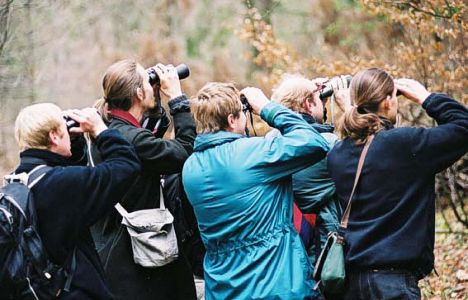
Watching wildlife is becoming a major economic pulse in
Arizona and around the nation. Nearly 1.5 million people set off to watch wildlife
in Arizona in 2001, spending more than $830 million dollars while they were
at it. State income and sales tax as a result of the wildlife watching industry--from
tourist purchases and siphoned from wildlife-related jobs--totaled more than
$46 million in 2001.
Source: U.S. Fish and Wildlife Service

|
 |
 From all of us at the Arizona Wilderness Coalition, we wish you, your family
and your friends a happy holiday season! We also ask that as you near the
end of 2003 you keep the Arizona Wilderness Coalition in mind. Support from
generous friends like you has enabled the Coalition to work hard to protect
Arizonaís remaining wild public lands
From all of us at the Arizona Wilderness Coalition, we wish you, your family
and your friends a happy holiday season! We also ask that as you near the
end of 2003 you keep the Arizona Wilderness Coalition in mind. Support from
generous friends like you has enabled the Coalition to work hard to protect
Arizonaís remaining wild public lands  and
waters. Unfortunately, there is always more work to be done. We need your
help to provide lasting protection for Arizona's existing and vulnerable wilderness
areas.
and
waters. Unfortunately, there is always more work to be done. We need your
help to provide lasting protection for Arizona's existing and vulnerable wilderness
areas.

 A
Season for Hope
A
Season for Hope  Saving the Best for Last
Saving the Best for Last  Wildlands connect mammals, birds, and other critical species to their homes, feeding and mating grounds, and more diverse gene pools. But a web
of roads and development is splintering these vital sanctuaries.
Wildlands connect mammals, birds, and other critical species to their homes, feeding and mating grounds, and more diverse gene pools. But a web
of roads and development is splintering these vital sanctuaries.


